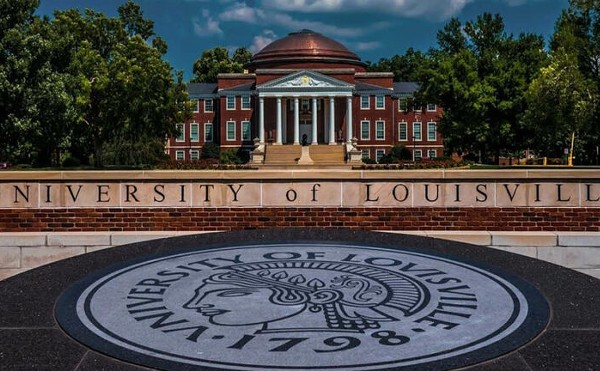The debate between those who want to legalize marijuana in Kentucky and those who believe it ought to remain on the list of Schedule I drugs — drugs considered highly addictive and with no medical value — often focuses on culture and lifestyle choices. Kentucky political icon Gatewood Galbraith was catapulted to larger-than-life status back when he began his run on the governor’s office based on a platform of cannabis legalization, making him a hero to many and a cliché straight out of the 1939 anti-marijuana propaganda film “Reefer Madness” to others. The face of the pro-cannabis front is generally characterized as that of a burnout who wants easy access to weed and a bag of potato chips. The public perception of that face is starting to change, though — thanks in part to the reports coming out of states like Colorado and Washington as well as organizations like Kentuckians for Medicinal Marijuana (KY4MM) that are trying to educate the public about the misconceptions and advantages of legalization. And according to KY4MM activist Jaime Montalvo, the medical and economic benefits are clear.
Montalvo says legalizing marijuana for medical purposes could help alleviate the chronic pain of 150,000 Kentuckians. Currently, these 150,000 people are either dependent on legal painkillers, like Oxycontin or other opiate-based pain killers, or they are taking nothing at all and suffering the pain. As Montalvo points out, there’s more to taking legal painkillers than simply not feeling pain. These very legal drugs have potentially devastating side effects — like most of the illicit ones listed as Schedule I — with the notable exception of marijuana. Montalvo, who suffers from multiple sclerosis, says he turned to marijuana to escape the side effects of his legally prescribed cocktail, which he maintains is as bad as the disease it is supposed to help him live with.
Unfortunately, he was eventually caught — not because of the reputed and thoroughly exaggerated “gateway” characteristics of cannabis, but because of someone else’s criminal activity. Following a robbery at the PNC bank that was once located on Southern Parkway in Beechmont, LMPD tracked the suspect, using dogs, through the alley next to Montalvo’s home in the South End. Montalvo says the police came back to his house a week later and arrested him for the small number of marijuana plants he was growing for medicinal use.
The arrest did more than force Montalvo back on the legal drugs with quality-of-life-reducing side effects that he had managed to ween himself off of; he also lost custody of his son for six months.
Montalvo is now on probation. Most of the members of KY4MM are. For Montalvo, it wasn’t even the presence of the small number of plants in his house that got him in trouble; rather, when the police came for him, the first thing they did was administer a drug test. So he was arrested, convicted, temporarily lost custody of his son and is now back on the very legal big pharma drugs that were hurting his quality of life before.
“The bad part,” he says, “is that mine isn’t an uncommon story.”
Why the hell not?
Lately, the discussion is shifting. As other states — 23 and counting — have legalized what has been called over the years Kentucky’s number one cash crop, we are faced again with a very simple question: Why the hell not?
Montalvo says he has been told by a lot of people, including political leadership in Frankfort, to avoid any mention of economics when talking about the benefits of legalizing medical marijuana. “But it’s hard not to,” he says. “It’s a double-edged sword.”
Montalvo says KY4MM estimates the state could see a tax revenue boost of $13 million dollars from the sale of 50,000 pounds of medical marijuana. “That’s a real number,” he says, “and it’s starting to turn some heads.”
According to a February 2015 report on cnn.com, the state of Colorado raked in $53 million in additional revenue over the first year of legalizing recreational marijuana. And while the report also states that number fell short of initial projections, it was nothing to sneeze at, either. When Colorado legalized both recreational and medicinal marijuana, it also slapped additional taxes and fees on them. Even with a lower tax rate for medicinal marijuana — 2.9 percent as opposed to 28 percent for recreational cannabis —the state brought in $16 million in taxes on medicinal marijuana alone. Similarly, a July 2015 report by the Drug Policy Alliance (DPA) says the state of Washington brought in an additional $80 million in revenue.
Additionally, there is no indication that legalizing the Schedule I plant led to any increase in crime. Another report by the DPA points out that Colorado saw a decrease in violent crime and traffic fatalities. The DPA report on the state of Washington also says that since legalizing marijuana, instances of violent crime decreased.
It seems the biggest problem with legalizing weed in Colorado or in Washington has been that there are still some who would rather buy it on the black market to avoid the additional taxes and fees. In spite of that, the number of arrests for marijuana-based offenses also decreased — by 98 percent in the state of Washington — saving both states time and money. Between 2000 and 2010, the state of Washington spent over $200 million on marijuana enforcement — saving the state an additional $20 million in the first year.
Montalvo says that four years after regulating the medical marijuana market in Colorado, the state has created ten thousand new jobs. “They estimate that for every 10 medical cannabis patients in Colorado there is one job.”
Profitability and the drug war
Recent anecdotal evidence clearly suggests that legalizing medical marijuana and regulating it would benefit Kentucky on multiple economic levels. Part of the problem in the battle to legalize medical cannabis lies in that Schedule I classification and the “no medical value” toe tag placed on it by federal law enforcement. This not only creates complications in states where legalization is a fact of life, but it creates financial blocks for medical research and testing in this country. Most evidence about the effectiveness of marijuana as a medical aid is anecdotal — so much so that even those who have never seen a joint or an edible outside a Netflix original or movie reference could probably recount its advantages in the same way they could recount the tales of Bigfoot or the monster moles reported to live in the fenced off abandoned land around Louisville Airport. (Ask anyone who’s lived in the South End for more than five years.) People suffering from chronic pain, people living with AIDS, cancer patients and veterans returning from Iraq and Afghanistan suffering from PTSD have all testified to the benefits of medical marijuana.
But there are legal drugs for these people, right?
The most commonly prescribed painkiller is Oxycontin, which is manufactured by Purdue Pharma, a privately owned company in Abingdon, Virginia. It significantly decreases pain. It also commonly causes constipation, nausea, stomach pain, loss of appetite, vomiting, sleepiness, dizziness, itching, headache, dry mouth and sweating.
Coincidentally, Oxycontin can also create physical and psychological dependance. The longer patients take it, the higher the dosages required for the same effect.
Also, maybe not so coincidentally, a 2011 article in Fortune Magazine reported that Purdue Pharma raked in $3 billion in profits on this one narcotic alone. These profits will undoubtedly increase since the FDA announced last month that it is giving the green light for doctors to prescribe the painkiller to children as young as 11.
Anecdotally, cannabis in its various forms — edibles, oils and smokable — decreases pain, increases appetite and helps insomnia. The National Institute on Drug Abuse website lists a series of negative side effects, ranging from “impaired body movement” to “lower life satisfaction” and provides anecdotal evidence to support its claims.
It appears as if anecdotal evidence is fine as long as big pharmaceutical companies are providing the anecdotes, all the while clearing billions in profits and guaranteeing patients’ long-term dependency.
On the homefront
Here in Kentucky, the war on weed has cost billions of dollars and thousands of hours. According to a 2010 ACLU report, the Commonwealth spent $20 million on marijuana law enforcement alone. Since Kentucky currently ranks third in the nation for its number of marijuana arrests, the financial burden placed on taxpayers to ensure non-violent drug offenses are adjudicated is significant. According to information provided by KY4MM, there are between 19,000 and 22,000 marijuana arrests per year in Kentucky. A 2007 report states Kentucky spent $1.68 billion in maintaining the status quo in keeping cannabis off the streets; $384.94 million of that was spent on judicial and legal services alone.
On the other hand, it is worth pointing out that arrests for first-offense misdemeanors, like simple possession, have decreased since 2011, when Governor Beshear signed HB 463 into law, turning possession of up to eight ounces into a Class B misdemeanor. According to a 2012 WDRB report, arrests for these first-offense charges dropped 30 percent. What was not included in that report — which used two University of Louisville athletes as test case examples — was that second offenses are not given the same misdemeanor treatment.
Another staggering point left out of most conversations about legalization is racial disparity. As stated in a 2013 ACLU report, blacks are six times more likely than whites to be arrested for marijuana possession.
Moreover, the anticipated $400 million in taxpayer savings never quite materialized, in spite of the hype around HB 463.
While the anecdotal evidence suggests that Kentucky could save time and money if medical marijuana were legal, the other hold up — or what some would call more of a “stick up” — is the amount of money the Commonwealth makes as a result of enforcing current laws. According to a Washington Post report, the LMPD narcotics division has spent $2.2 million over the last several years as the result of assets seized under Federal Civil Asset Forfeiture laws. According to documents received through an Open Records Request, LMPD filed its most recent report for the last fiscal year and reported almost $1.5 million in cash and 85 vehicles seized. An additional $699,134.81 and 22 vehicles were awarded to the LMPD narcotics division. These amounts do not include any potential monies from the Federal Equitable Distribution Program, which critics from the ACLU and various watchdog groups claim is even more profitable than state level asset forfeiture programs.
Statewide, the issue gets more muddled. According to a February report on LEX18 (the NBC-affiliate TV station in Lexington, Kentucky), only 63 of the 400 law enforcement entities in Kentucky bothered to turn in their annual asset forfeiture report to the Office of Drug Control Policy. According to the report, those 63 agencies brought in $9 million in asset forfeitures, including 300 cars and 2,700 guns. The report does not break down by drug type, but one thing is clear: While there evidence to support the notion that there is money in legalizing medical cannabis, there is also a tried-and-true profit pipeline in keeping it illegal.
The “pot politician” problem
Montalvo and the folks at KY4MM aren’t shy about working with anyone. Montalvo says his organization has even been trying work with Matt Bevin’s gubernatorial campaign. “We’ve been working with Bernie Kunkel at the Bevin campaign. We’re trying to explain to them that [legalizing medical marijuana] could be a jobs-generating piece of legislation if we pass it written in the proper way.”
Although the Bevin campaign is not yet convinced, Montalvo points out that a properly written medical marijuana law could bring as many as ten thousand new jobs to the state. Legal weed means, among other things, legal dispensaries. This means putting a licensing and inspection process in place. In other words: Legalizing medical cannabis could mean jobs — from growing to processing to dispensing. This could bring even more revenue into the state budget from licensing fees and business taxes.
The Bevin campaign did not answer LEO’s request for a direct comment.
Jack Conway’s campaign manager, Daniel Kemp, did release the following statement: “Attorney General Conway has been supportive of legislation allowing the use of cannabidiol [sic] by doctors at state research hospitals. He generally doesn’t support legalizing medical marijuana, but is open to hearing from the medical community on the issue.”
Independent candidate Drew Curtis has said that he supports both industrial hemp and the legalization of medical cannabis because “in these tough economic times, promising revenue streams should be encouraged.”
Dan Seum, Jr., the Veterans Affairs Director for KY4MM says legalizing medical marijuana really is “an economic stimulus bill.”
It’s not just people like Montalvo and Seum, Jr. who see a need to reexamine Kentucky’s drug laws. Speaker of the Kentucky House of Representatives Greg Stumbo (D-95) supported House Bill 3, also called “The Gatewood Galbraith Medical Cannabis Act,” which would have required the Department of Public Health to operate a medical marijuana program in the state. The bill did not pass muster for a variety of reasons; even KY4MM were not in favor of the bill as it was worded, and they lobbied against it.
“It was full of holes,” says Seum, Jr. about Stumbo’s bill.
A similar bill is slated to be on the ballot for voter consideration in Ohio. And while that bill is drawing a lot of criticism from pro-legalization corners, it does at least demonstrate one thing, very clearly: State governments are coming around to the idea that cannabis can mean additional revenue.
Montalvo and Seum, Jr. maintain that the core issue is probably fear. Legalizing medical cannabis, Montalvo says, “means creating an industry from scratch. It’s more than a little daunting.”
Seum, Jr. agrees, saying KY4MM works to educate everyone from neighbors to politicians about this issue. “It’s all about education,” he says. “They’re not sure how to set up licensing, or how to regulate it. That’s what we’re trying to give them through our bill.”
The bill the group is trying to get introduced would change the language in Kentucky Revised Statues, Chapter 218A — the section that deals with how the state addresses drug regulation. The new bill defines everything from “cultivators” to “dispensers,” as well as laying out the Department of Public Health’s role in regulating the industry.
The more difficult issue, says Montalvo, is cowardice. He recently spent a few days in Frankfort talking to members of the State House. “We’ve given up on the Senate,” he says, “for now.” The problem, Montalvo says, is not that there isn’t support. The problem is that no one will put their political nose to the grindstone.
He says in spite of the increased understanding of the possible economic impact, getting a realistic bill passed is slow going because officials are scared of the political consequences. “There are at least 10 different people willing to sign on and support it,” Montalvo says. “But no one is willing to sponsor it.” •






